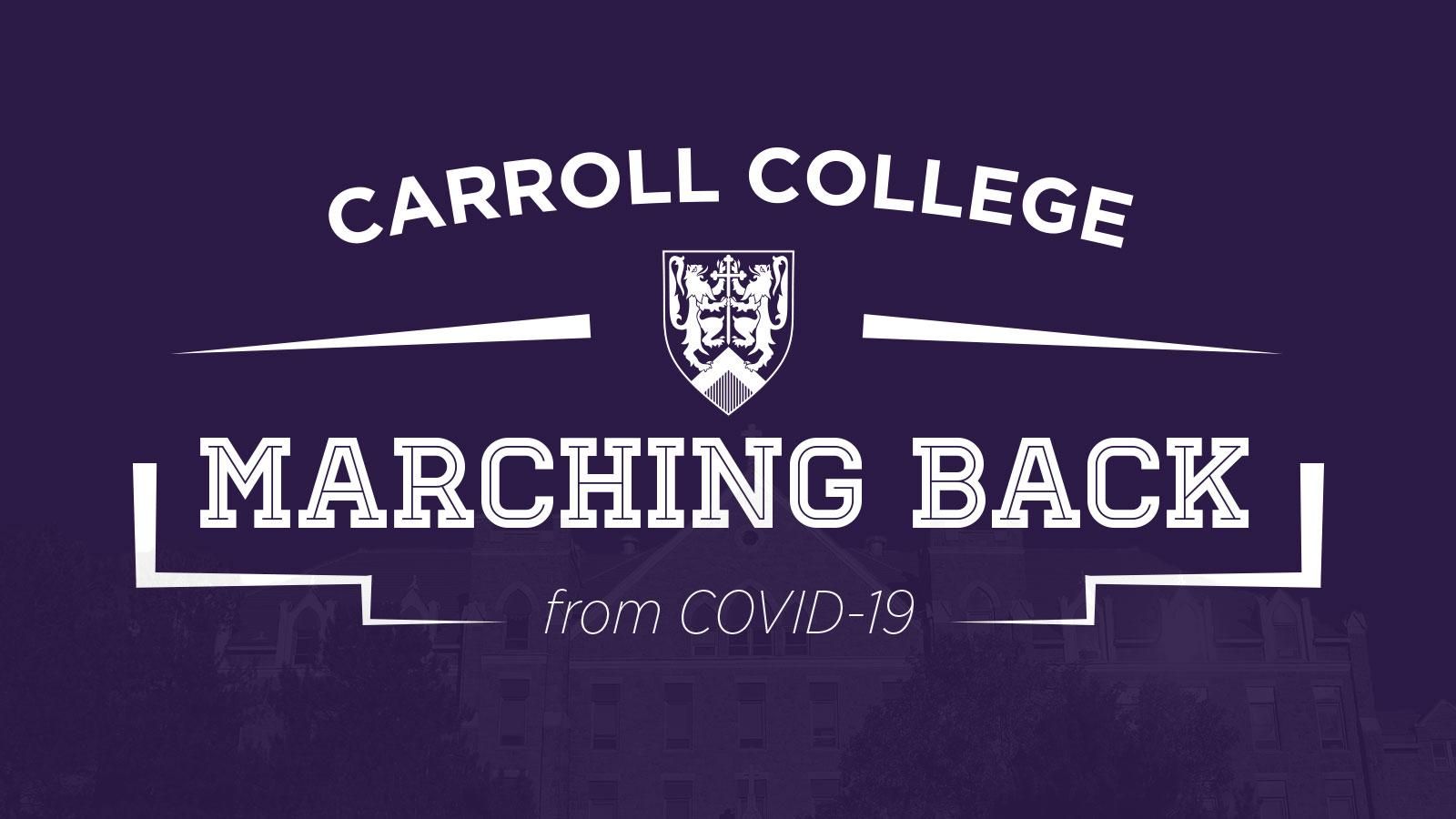HELENA – Carroll College has partnered with the City of Helena, the City of East Helena, and Lewis and Clark Public Health to test municipal wastewater samples for the presence and concentration of severe acute respiratory syndrome coronavirus 2, or SARS-CoV-2, which causes COVID-19.
In early results, the samples show a correlation between higher concentrations of the virus in wastewater and the recent increases in cases in the cities of Helena and East Helena. Going forward, the data could serve as an early predictor of an increase in cases in the respective communities.
Researchers at the college including Stefanie Otto-Hitt, Associate Professor of Biology, Theresa McHugh, Assistant Professor of Biology, and Ashley Beck, Assistant Professor of Biology, are conducting the wastewater surveillance and correlating their SARS-CoV-2 measurements with the daily number of confirmed COVID-19 cases in the county. Accordingly, Lewis and Clark Public Health has included wastewater testing for SARS-CoV-2 as one of several key criteria to be used in implementing Governor Steve Bullock’s phased Reopening of the Big Sky strategy.
“My colleagues and I are grateful for the opportunity to use the skills and resources we have here at Carroll in order to provide meaningful data for our community during the COVID-19 pandemic,” said Otto-Hitt. “We feel very fortunate to have a highly supportive and engaged network of collaborators across the cities of Helena, East Helena, and the Lewis and Clark County Public Health. The process of getting the surveillance testing up and running has truly been a team effort.”
For the testing, wastewater is collected by the City of Helena and City of East Helena wastewater treatment plants and delivered to Carroll College on a weekly basis. Carroll College processes the wastewater samples and provides a report to the City of Helena, City of East Helena and Lewis and Clark Public Health. Officials at Public Health then compare wastewater testing results to local confirmed and active case data providing additional tools for early detection of rising local infections, monitoring overall community infection trends, and confirmation of low infection rates as correlated with local diagnostic testing. In addition to informing decisions regarding movement between reopening phases, the data will aid Public Health in decision making around the Governor’s directives and influence local Orders of the Health Officer and will, more importantly, be available to the public to shed light on decision-making at the agency.
Eric Merchant, administrator for disease control and prevention for Lewis and Clark Public Health, notes that wastewater testing adds a new method to help track COVID-19 in the community. “Prior to this project, our community has relied on large scale diagnostic testing of people to inform the local extent of disease,” he said. “However, unlike choosing to get tested for COVID-19, we all use the toilet, right? In this way, the testing of wastewater provides a true population indicator,” he added. “Of course, it’s just part of the overall picture for tracking COVID-19. Testing of wastewater for the virus does not replace testing people, it supplements it.”
The wastewater results report is updated on Friday afternoons and is available for public view. The report can be found as part of the Local COVID-19 Decision-Making Dashboard on the Lewis and Clark County website.
Lewis and Clark Public Health approached Carroll College in May about the ability of the college to perform the testing. Otto-Hitt and McHugh worked closely with members of the biology and facilities departments as well as researchers at the college who have conducted testing for Carroll’s ongoing West Nile research in order to prepare and secure the lab space for testing. The wastewater testing is currently taking place in a dedicated lab room within the Wiegand Undergraduate Research Lab. For the testing, Carroll researchers are using a PEG-based viral precipitation procedure in order to isolate virus from wastewater influent coupled with RNA extraction and Real-Time Polymerase Chain Reaction (RT-PCR) to determine the concentration of SARS-CoV-2 per liter of wastewater influent.
As reported by the Centers for Disease Control and Prevention (CDC), wastewater surveillance has been successfully used in the past as a method for the early detection of other diseases, including polio. Because SARS-CoV-2 is shed in the feces of individuals with symptomatic or asymptomatic infection, wastewater surveillance has the potential to capture data on both of these types of infection within a community. Furthermore, an estimated 80 percent of United States households are served by municipal sewage collection systems, thereby allowing researchers to quantify SARS-CoV-2 for the majority of individuals within a community. These quantitative SARS-CoV-2 measurements can then provide information on changes in total COVID-19 infection within the community that contributes to a particular wastewater treatment plant. Overall, sewage surveillance can serve as a leading indicator of changes in COVID-19 burden within a community that is independent of access to clinical testing and healthcare-seeking behaviors.*

